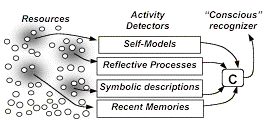The Emotion Machine - Chapter 4: Consciousness
Going on with my reading of Minsky’s book, chapter 4 is titled “Consciousness” and it definitely treats about that.
The first section of the chapter tries to define what consciousness is, of course, failing as in fact “conscience” is nothing but a word that describes something that we are able to percieve. As our mind, it can’t be so simple as to define with just one word (or just one process) so Minsky states that consciousness may be in fact the interaction of different mind resources. He proposes the idea that our minds have a consciousness detector that is activated when certain resources are activated. In that idea we can explain for unconcious complex behavior and conscious simple behavior. (Of course, also the oposite.)

Minsky also describes how neural or connectivity networks cannot fully describe the secrets of counsciousness, but semantic networks can. (How aligned is this with neurobiology?) This is because our counsciousness process must have at least four characteristics:
- Memory: they need to involve memory because of the Inmanence illusion - the illusion that everything we percieve, think and feel is happening right now, and that we have all information we can get from our senses. What we think of is not because of what’s happening right now, but what we have just seen/done.
- Serial processes: it seems that for complex processes, or processes that require a certain resource, we can only do one at once, and that would explain concepts like “attention”.
- Symbolic descriptions: we need to build abstract models and semantic representations of our world and ourselves included in them.
- Self-Models: we also need a way to model ourselves and predict our own reactions to certain situations, based on different models (not just one) of ourselves.
Minsky also proposes that there is another detector which would activate certain resources to make us conscious of a specific problem that we need to solve when instinctive behavior would not solve the problem.
Then he treats our self-reflection as if we were spectators of The Cartesian Theater, somewhat alike Socrate’s metaphor of the underground den and the shadows on the wall. However, cartesian theater idea is mostly from Daniel Dennett, and could be briefly described as if our conscience was a spectator in a show were different part of ourselves were the actors.
Finally, Minsky explains the idea of regulator and detector brains. This brains could be meta-minds that interact as if the outer world for them was the information they could get from our real brain. Some sort of an inside-looking, that could prove for more abstract plans rather than real world experience.
A curious thing is that Minsky describes that we’ve got six levels of inner-brains, which correspond to different consciousness levels that humans have: instinctiveness, learning, delibering, reflection, self-reflection and self-conscious reflections. He hasn’t gone further in detail about them, but I truly find it amusing that I already have read that when studying Kabbalah and the Tree of Life as a map to human mind, where the lesser six sephiroth (Yesod-Hesed) would represent six differents levels of human counciousness. Maybe was just chance, but I’ll try to get back to this later with further detail.
